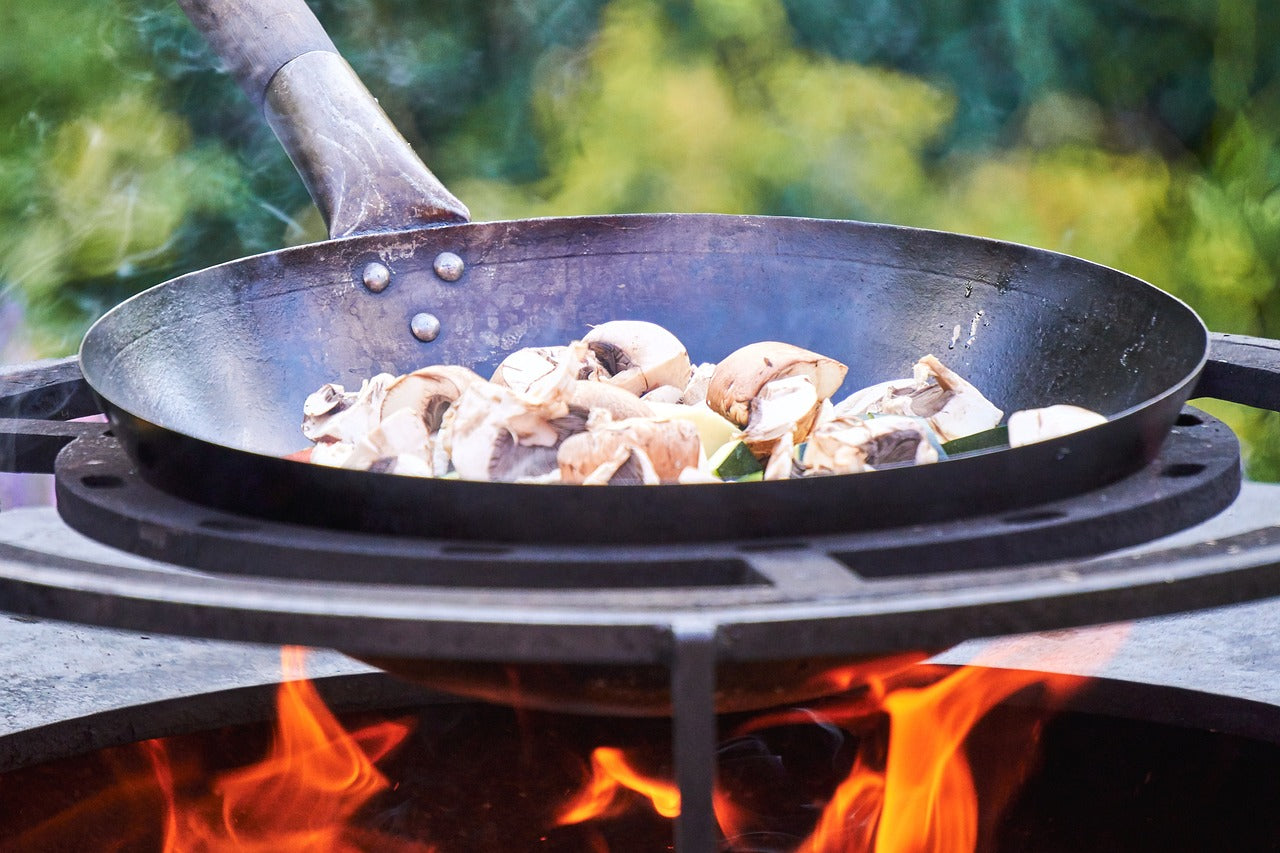In the world of culinary delights, the wok is an indispensable tool, especially for those who enjoy Asian cuisine. The secret to its success lies not just in its unique shape but also in its proper seasoning. Seasoning a wok is a crucial step that enhances its performance and longevity, allowing you to create mouthwatering dishes with ease. In this blog post, we will delve into the reasons why seasoning a wok is essential and provide you with a step-by-step guide on how to season it like a pro.
Why Seasoning Matters:
-
Prevents Rust: Most traditional woks are made of carbon steel, which is susceptible to rusting. Seasoning creates a protective layer, preventing moisture from coming into direct contact with the metal and thus keeping rust at bay.
-
Improves Non-Stick Properties: A seasoned wok develops a natural non-stick surface over time. This means that your food will be less likely to stick to the surface, making stir-frying and sautéing a breeze.
-
Enhances Flavor: As a wok is seasoned and used repeatedly, it absorbs traces of oils and flavors from various dishes. This imparts a unique and delightful taste to your future meals, adding an authentic touch to your cooking.
How to Season Your Wok:
Step 1: Clean the Wok
Before you start seasoning, make sure to wash the wok with warm water and soap to remove any dirt, dust, or protective coating that was applied by the manufacturer.
Step 2: Dry the Wok
After washing, dry the wok thoroughly with a paper towel.
Step 3: Blue the Wok
You can skip this step with an Oxenforge Wok. Our blacksmiths already blue the wok for you.
Heat the wok over high heat until it begins to turn blue. This process is called "bluing" and it forms a layer of magnetite on the surface of your wok. This magnetite layer is rust resistant and will be the base of your seasoning.
Step 4: Add Oil
Let the wok cool down for about 15 minutes. Once the wok has cooled, add a small amount of oil (such as vegetable or peanut oil) to the wok and use a paper towel to spread it evenly over the entire surface of the wok, including the sides. The best oils to use are ones with high smoke points like peanut oil, avocado oil, or lard.
This step is a preparatory step for step 6
Step 5: Cook Aromatics
Add a generous amount of cooking oil and stir fry a bunch of green onions on the wok on medium-high heat.
This basically emulates the natural seasoning process of woks in a Chinese kitchen, which is cooking oily food on high heat.
The reason why we use green onions is because:
- They are cheap
- They are low in starch and protein, so it doesn’t stick easily.
- They are low in water content, so they won’t sweat too much when you put them into the wok.
- They are easy to move around the wok to help even out the heat distribution while you are stir frying them. Thus preventing the oil from burning on certain spots.
- Frying aromatics also helps take away the iron-like smell of new woks.
Of course you can use other ingredients in this method if green onions are difficult to source in your area, but keep those principles that I mentioned in mind when you choose what ingredient you fry up.
Step 6: Cool Down
Turn off the heat, toss those aromatics away and let the wok cool down before rinsing it with warm water and drying it over heat. Remember to always store your wok dry!
Step 7: Use and Maintain
After seasoning, your new wok is ready to use! Make sure to clean and maintain it properly to ensure it lasts a long time.
Following these steps will help you to properly season your new wok and ensure it develops a durable non-stick surface that will make stir-frying a breeze. Happy cooking!
Seasoning your wok is a labor of love that pays off with every delicious meal you create. The process not only prevents rust and improves non-stick properties but also infuses your dishes with a unique flavor that can only come from a well-seasoned wok. So, roll up your sleeves, follow our step-by-step guide, and embark on a culinary journey that celebrates the art of Asian cooking with a perfectly seasoned wok.
Most home cooks agree that bluing a wok is one of the most challenging parts of the seasoning process. If you are looking for a wok that is already pre-seasoned, check out the hand hammered woks on our website.

